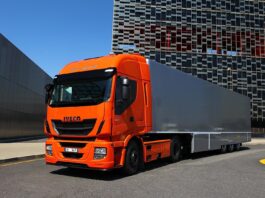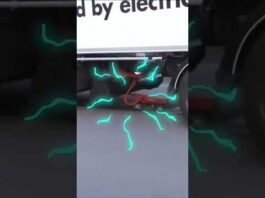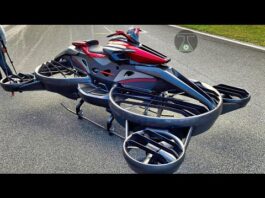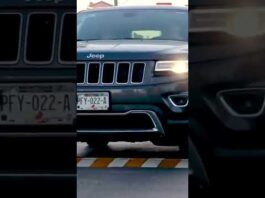
We could all be riding in lounges on wheels with Lambo doors, if enough of the vehicles are on the roads
Automakers desperately want to kill off mirrors. The pieces of glass attached to the roof and side of almost all modern vehicles increase aerodynamic drag, a point of frustration for automotive designers trying to build the sleek, fuel-efficient cars of the future. Soon, though, the government-mandated safety features may no longer be necessary. Tiny rear-facing cameras now common in newer cars (and required starting next year) have largely made mirrors redundant, and automakers are developing designs that drop them entirely.
The fight over mirrors is one small example of how technology changes not only the way cars operate but also what they look like. Autonomous vehicles will be the most radical change in the way cars are driven since they were invented — it stands to reason, then, that the look and feel of automobiles could also soon be up for a radical rethinking.
“When we design a car now, the starting point is the fact that we have to position one occupant in a driving position,” says Geoff Wardle, executive director of graduate transportation systems and design at ArtCenter College of Design. “When we start to consider a vehicle that does not have to have somebody driving it, then we can start from a different perspective altogether.”
For a time, it seemed Google would lead the automotive design revolution. Seeking to gain an early lead in the driverless car sector, the company unveiled an unusual pod-like vehicle known as Firefly 2014. The tiny vehicles, cute enough to earn the nickname “koala car,” reached a max speed of 25 miles per hour and racked up millions of miles scooting around Google’s hometown of Mountain View, California, and Austin, Texas. The design of the vehicles reflected Google’s overall kiddie aesthetic, as well as their desire to cast driverless cars as fanciful rather than threatening. “They wanted to make the car look friendly and nonhostile, to give it a character that people felt comfortable with,” Wardle says.

(Google)
Ultimately, though, the charming cars clashed with the pragmatic needs of a driverless vehicle on today’s roads. Now that Google is getting serious about turning its driverless-car tech into a consumer-facing product, it’s retiring the Fireflies in favor of a fleet of 600 Chrysler Pacifica minivans that are already picking up actual passengers in Phoenix. Instead of scaling up Firefly production, the company is content to retire the design as a data-gathering experiment. The only external vestige of the more inventive Firefly design is the LIDAR sensor that sits on the roof, which looks like an old-school police siren. “By focusing on mass-produced vehicles like the Pacifica minivan, we’ll be able to bring fully self-driving technology to more people, more quickly,” Waymo, the self-driving car company that was spun off from Google last year, wrote in a blog post.

(Waymo)
It’s unlikely any other company will immediately follow in Google’s design footsteps. The tiny Firefly was fine for cruising neighborhood streets but likely didn’t have the horsepower for highway driving. And with pickup truck and SUV sales on the rise, there’s little evidence that American drivers want their vehicles to be adorable. The last “cute” car to become a sales sensation was the Volkswagen Beetle, which was a hit in the United States in the 1960s, according to Robert Ebert, an economics professor at Baldwin Wallace University. “There will be driverless cars, but my guess is that people will still want them to be very functional, comfortable, and stylish in the sense that when they pull up to the country club or even the drive-in window that they are making a statement about both their economic position and their good taste,” he says.
While car exteriors will largely stay the same in the near term, interiors could see dramatic changes. A car without a steering wheel (or a retractable one) would allow more space for passengers to stretch out. Mercedes-Benz has shown off a driverless-car concept where passengers would face each other within the vehicle. Chevrolet has one where the chairs swivel to face forward or backward. Such designs have implications for other parts of the car layout as well. “If you were getting into the car sitting backwards in the front of it, you’d need the doors to be a completely different shape,” Wardle says. That could mean Lambo doors. Lambo doors for everybody.
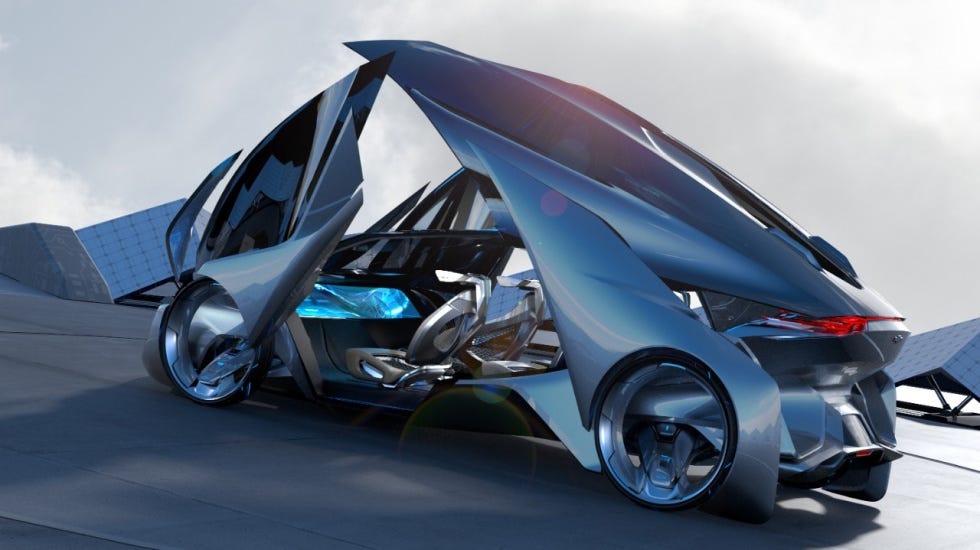
(Chrysler)
In general, car interiors could be reimagined as rolling living rooms or offices rather than cramped cabins meant to protect passengers in the event of a crash. Television screens will likely abound. Paul Deutschman, an independent automotive designer based in Montreal, imagines fold-out worktables where passengers could set up their laptops. A variety of infotainment operating systems will ensure that all these digital experiences are being mediated by tech giants like Apple or Google. “You’ll basically be able to enjoy everything you can enjoy in the living room of your house,” Deutschman says.
Changes in car ownership could also have design implications. Companies like Lyft are going to try to nudge people toward subscription services where they pay a monthly fee for access to driverless cars rather than owning them outright. Such a model could encourage a wider variety of car designs for specific use cases. Maybe a tiny pod like Google’s Firefly would make sense for a commute to work, while a large, tricked-out party vehicle would be the choice for a night on the town with friends. “Different companies offering us personal mobility will want to differentiate their brands,” Wardle says. “There will be a lot of diversity in the way vehicles look.”
But a lot of these innovations, both interior and exterior, depend on a world where driverless cars are the norm, not the exception. A car can’t be a lounge as long as we’re strapped in by seat belts. Regulators won’t relax seat-belt rules until traffic fatalities have dropped precipitously. And traffic fatalities won’t drop precipitously until error-prone human drivers are largely off the roads. “If all the cars on the road suddenly changed to driverless, then I think we’d see a radical change in design, “ Deutschman says. “The problem is, that’s a utopia. What’s going to happen in all likelihood is there’s going to be this huge overlap of today’s cars blended in with driverless cars. Therefore there’s no way the driverless cars can prevent somebody from ramming into the side of them. I think the overall architecture of the driverless car is going to be forced to stay [similar to non-driverless cars]. …The technology will come fast, but I think the adaptation and implementation is going to be painfully slow.”




